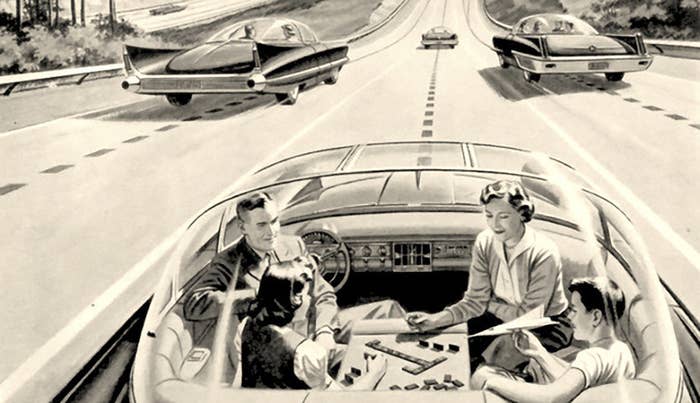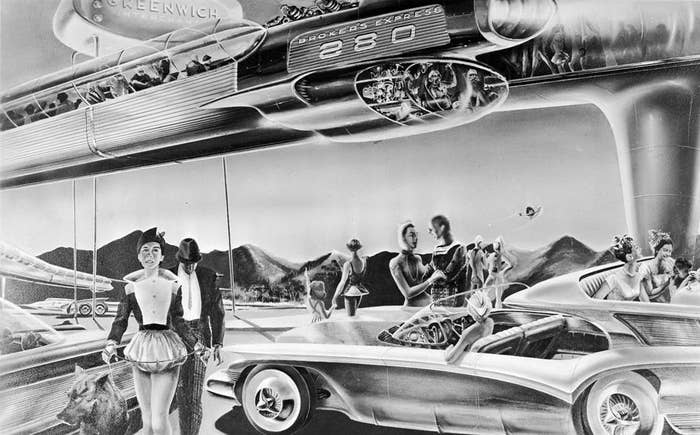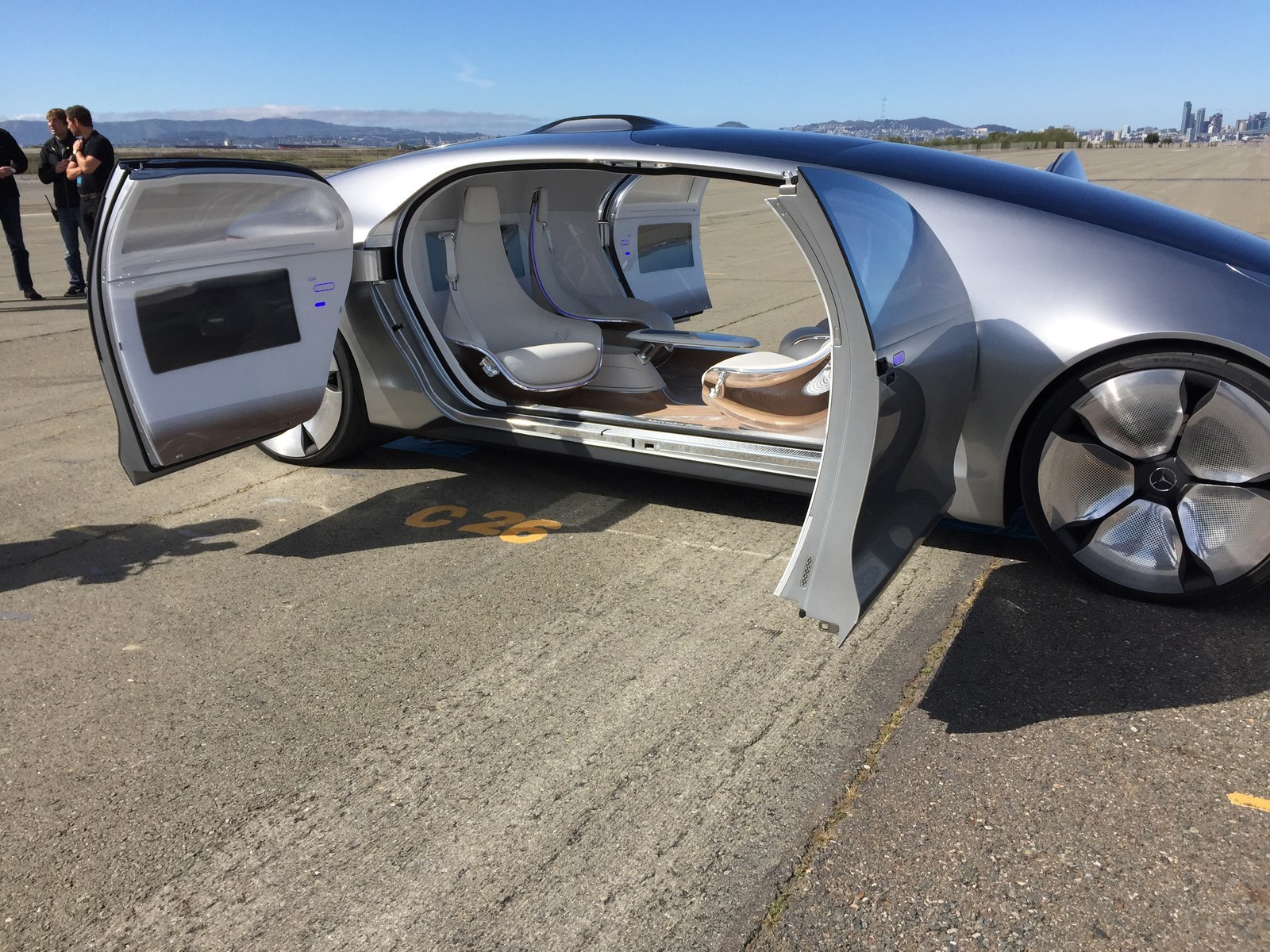
It’s the year 2030. You step outside your home onto a street unmarked by traffic lights, street signs, sidewalks, or boundaries between space for pedestrians and space for vehicles. You live in Tahoe; you have a meeting in San Francisco. It’s a long drive — more than three hours — and at this point, your driver’s license has been rendered useless. While you haven’t yet taken the plunge and bought your own driverless car, you do have some options: You can hail a driverless Uber — perhaps you’ve paid for Farday Future’s driverless subscription service — or you can hail a Lyft.
Each service is reliable in its own right — during the transition from human- to machine-driven cars, efficiency was not lost in translation. But with its fleet of “experience pods” dedicated to different themes, situations, and needs, Lyft’s driverless ride-hail service is an opportunity for the company to deliver on a promise it’s held close since the beginning: a superior rider experience. After all, when there are no drivers in the picture, you can focus all your energy on the passenger.
Tired? Hail Lyft’s napping pod. Need to get your nails done before your meeting? There’s a mani-pedi–Lyft pod for that. Want to get some work done? There’s a Wi-Fi–enabled pod outfitted with touchscreen tables to do your work.
At least that’s what Lyft Creative Director Jesse McMillin and his team have started to imagine, here and now in the not-yet-driverless world, just a few weeks after the company announced a partnership with General Motors to create and manufacture an on-demand driverless network. That partnership is still in its early stages, but it’s clear that the car manufacturing giant will be handling hardware and software, while the majority of Lyft's contribution to the partnership lies in its user base, its on-demand logistics platform, and any improvements it can make to the rider experience.
At the core of McMillin’s project is a fascinating question: What happens to the car when it’s no longer driven by a human? “Most cars are designed around the driver,” McMillin told BuzzFeed News. “Literally, you have the seat positioned a certain way and the window look a certain way for the driver.” But, he said, when you eliminate the human driver, “it’s a new world where … a vehicle is freed up to do different things.”
“There’s a lot you can do with not just the vehicle itself but things you can add into the vehicle. The things you can offer could be very modular — drinks and that kind of thing — to, like … something like a little touchscreen table connected to your seat that allows you to do work.”
In a driverless car, you don’t need a driver’s seat. You don’t need to design lighting for maximum driver visibility. You can reimagine windows. "For me, one of the most interesting things in a self-driving experience is, looking outside might be really different," he said. "Does that mean maybe the windows get bigger or maybe the whole ceiling is all glass? You can imagine anything from The Jetsons to a really fun sci-fi movie, where the car has that bubble kind of dome that lets you see 360 from all directions since you don’t have to stay focused on the road."

As for seating, McMillin sees an opportunity to capitalize on the ability to engage with other passengers — or no one at all. "Do you have more carriage seating where people are facing each other, or chairs that swivel around? …. We’ve been thinking a lot about different types of experiences and what that means — do you have four or five seats in a car or is there a pod ... that’s a circular bubble and floats around and carries one person where it needs to go?"
On its face, McMillin’s excited babbling might seem like a shtick, or a marketing ploy, or at least very far off. But driverless cars cut out one of the ride-hail industry’s most vexing challenges — that is, drivers themselves. When McMillin’s company no longer has to contend with managing a massive, diffuse worldwide workforce of hundreds of thousands of independent contractors — a classification that legally bars Lyft from certain levels of control over its employees — it can more granularly tailor the ride experience.
With plans to offer service-centric vehicles on the driverless platform, McMillin says there may be new opportunities for drivers when Lyft's inevitable driverless future rolls around. "Who knows whether the driverless technology of the future offers different types of service-based opportunities for someone to do something other than driving?" he said. "Someone could play a role that’s not just specifically piloting the vehicle around."
Lyft Co-Founder John Zimmer told BuzzFeed News that with GM's help, Lyft will offer autonomous rides within the next 10 years. And besides, bits and pieces of McMillin’s ideas are already scattered throughout the auto industry. Mercedes has already developed a “concept car” that is fully autonomous and technologically viable in a controlled space. Though the F105 will likely differ greatly from the driverless car Mercedes ultimately brings to market, it already looks like the alien vehicle McMillin is describing, with swiveling chairs, a Wi-Fi–enabled touchscreen table, and huge windows.

And GM is expected to launch a sort of proto-autonomous technology called "Super Cruise” in its 2017 Cadillac CT6. According to GM's Executive Chief Engineer David Leone, Super Cruise takes standard cruise control and “adds lane-keeping and steering functionality in the right environment. So if it's on the highway — not a heavily congested urban area — that has been properly mapped, it will allow you to drive the vehicle without your hands on the steering wheel."
Think of Super Cruise as an intermediate step between the cars of today and the fully autonomous ones of tomorrow: Though it doesn’t have full driverless functionality, it uses much of the same technology that driverless cars do — a high-precision GPS, a windshield camera, and short- and long-range radars that, together, paint a precise picture of where on the road the car is. The CT6 will be equipped much like a fully autonomous car, and Leone said that from the outside, it’ll look like one too.
What all this means is that it might not be long at all before a nearly driverless car pulls up next to you at a stoplight, and it might not be much longer after that until Lyft and GM deploy their fleet of hyper-customized ride-hails.
That said, what happens after driverless Lyfts become commonplace is anyone’s guess: Though Lyft and GM might agree that car ownership as we know it will soon come to an end, the companies are fundamentally at odds with each other about the future of the industry. Zimmer has been known to proclaim car ownership a thing of the past. Barra, on the other hand, thinks car ownership will temporarily be service-centric, as the general public gets used to the idea of a car without a driver, before returning to a model that looks more like today’s — personally owned vehicles sharing the road alongside Lyft napping pods.
"We realized that autonomous technology will first be introduced in a shared model," GM CEO Mary Barra told BuzzFeed News in a recent interview. “But there will be a point where there will be an individual owner as well; that's why we're working on both."
The Lyft-GM partnership may be a match made in heaven in 10 years, but beyond that the future is more complicated. Will GM forgo its partnership with Lyft in the face of a permanent drop in auto sales? Probably not. But if Barra is right and consumers return to the personal-car-owning days of the past, Lyft certainly has the short end of the stick. GM will be the company that rose from the ashes after bankruptcy, managed to get ahead of the tech curve, and innovate quickly, but then returned its primary revenue stream — its auto sales — to its former glory. And Lyft will still be competing with automakers.
So: It's the year 2040. Do you hail your Lyft mani-pedi pod or do you press a button that automatically sends your own fully autonomous vehicle to your door?
